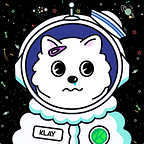Web3 Login Process: One-click login with Wallet vs Social login
Login flow (Web2.0 vs Web3.0)
Login flow (Web2.0 vs Web3.0)
As a product designer working in the Web3 industry, I felt this industry has a very high entrance level for users. At that time, I wanted to make web3 accessible for the next billion users.
For my goal, I started thinking from scratch, which is the login phase.
Users have the first impression about a product when they log in. Shortening the required steps is usually regarded as the “guidance” of a login flow, but why the Web3 beginners still think web3 is unfamiliar?
The log-in process in the Web3 industry is significantly different from Web2, including UX Writing and UX-Flow.
Web 2.0 Login:
- Social login with Google, Twitter, etc.
- Personal email signup > login
Web 3.0 Login:
- One-click with a wallet after installing wallet in chrome extension.
Kaikas Wallet Login flow
General Web3 login flow is very simple. Let me take an example of Kaikas Wallet.
Kaikas is a browser plugin, available as the Kaikas Chrome Extension. At its core, it serves as a Kaikas wallet: By installing it, you will get access to a Kaikas public address, with which you can start sending and receiving Klay or other tokens.
If you install it, you can log in web3 product supporting the Klaytn with just one click. When entering after putting the password, a wallet appears on the upper right part (chrome extension), and it is managed with a wallet seed phrase.
See how easy to log in. But some people think this process is unfamiliar compared to web2 login flow. They have gotten used to social login flow.
To solve this problem, Web3 Auth came out on the market.
Web3 Auth Login Flow
Web3 Auth thinks by using e-mail and social media single sign-on login used in existing web2, can lower entry barriers for web3 products.
“We onboard users via the Sequence Smart Wallet, a multi-key Web3 wallet that feels like Web2. Web3Auth’s Distributed Key Generation (DKG) powers the social login as one of those keys to make the login experience feel easy and familiar.”
— Peter Kieltyka, Chief Architect, Horizon Blockchain Games
Web3 Auth can provide familiar email passwordless or social logins via Facebook, Google, Discord, or AppleID to their user base. This greatly reduces Web3 user onboarding time.
Conclusion
As my first career has started in the blockchain industry, I’m getting used to the Web 3.0 login process. As the login steps reduce, it is hard to get out of it once you get used to it. On the one hand, I understand why it has a high entry barrier for web 2.0 users.
Product designers in the Web3 industry should choose a login flow between these two approaches based on the target users or consider something else.
So which one is better for my users?
